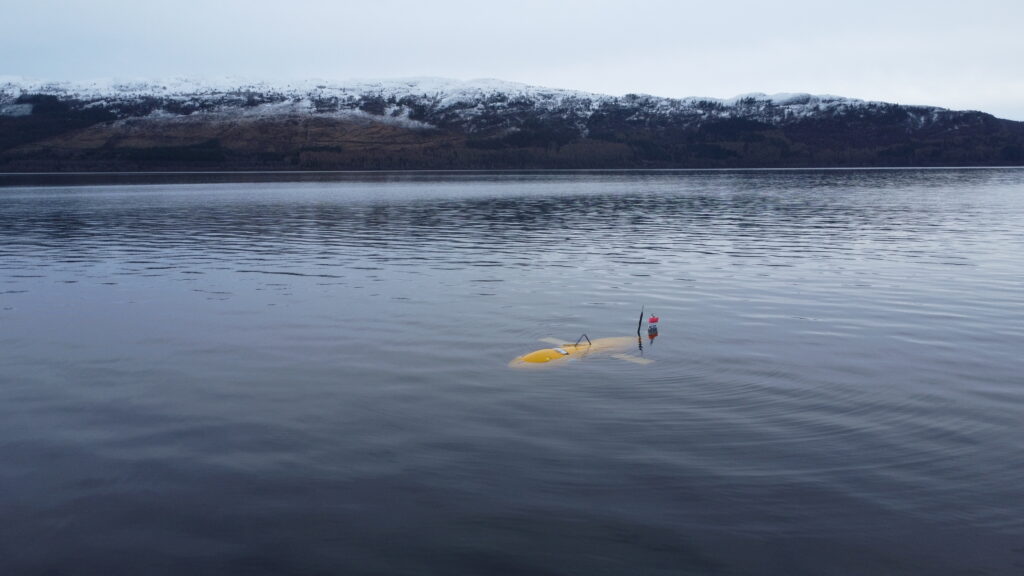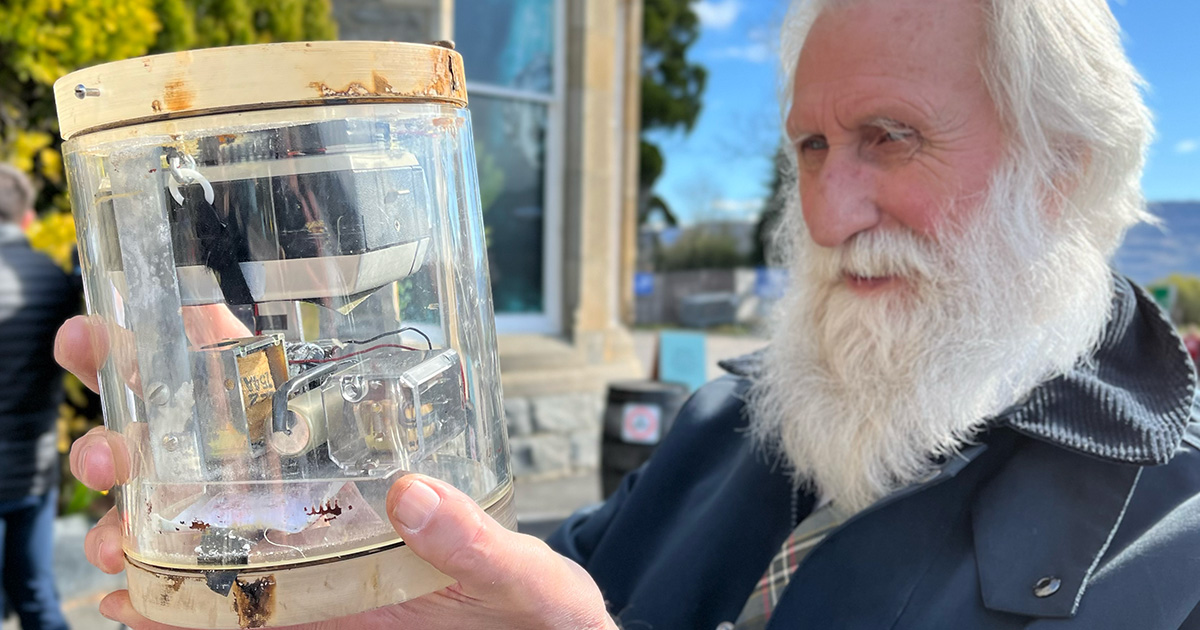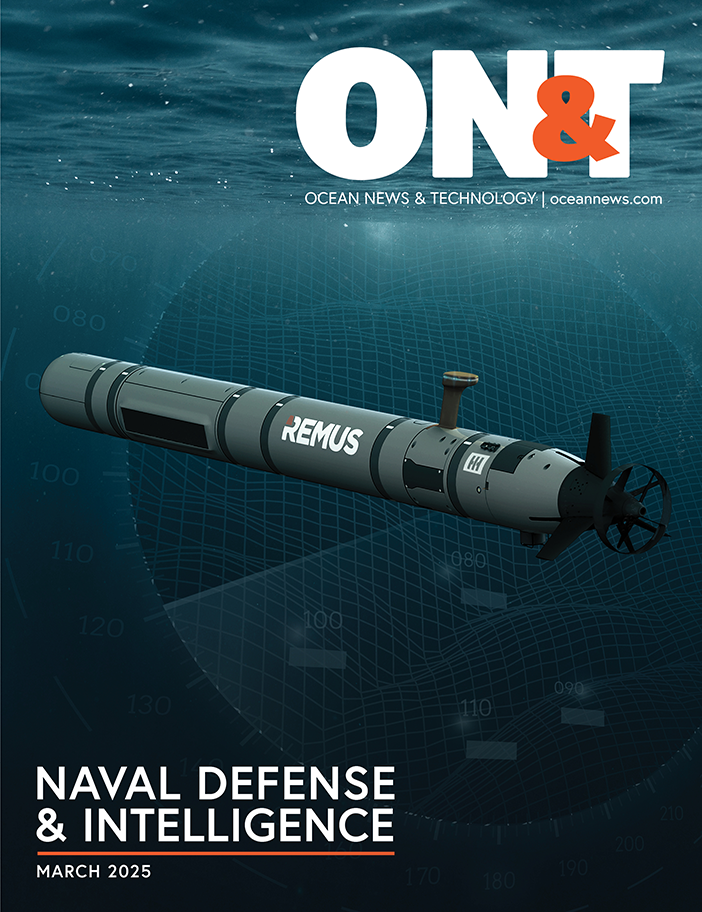During a test mission, the advanced underwater vehicle, designed for discovering the secrets of our global ocean, accidentally found an underwater camera system—thought to be one of the first attempts to catch the Loch Ness monster on film.
It is believed that the camera discovered around 180 m deep in the loch, had been placed in the water in 1970 by Professor Roy Mackal of the Loch Ness Investigation Bureau and the University of Chicago.
Remarkably, despite having been submerged in the 23-mile-long loch for 55 years, the camera was still in good condition and the film able to be developed by a NOC engineer, but the loch’s famous inhabitant does not appear to have made an appearance.
Adrian Shine, who set up The Loch Ness Project in the mid-1970s to investigate Loch Ness and its world-famous inhabitant, helped to identify the camera and says it was one of six deployed by Professor Mackal, with three of them lost in a gale that same year.
“It was an ingenious camera trap consisting of a clockwork Instamatic camera with an inbuilt flash cube, enabling four pictures to be taken when a bait line was taken,” he says. “It is remarkable that the housing has kept the camera dry for the past 55 years, lying around 180 m deep in Loch Ness.”
NOC has been trialing its underwater robotics, including running multi-day, 24-hour endurance tests, in Loch Ness for nearly a decade, but this is the closest the team—or its underwater robots—have come to encountering Nessie.
Sam Smith, ALR Operations Engineer from NOC’s Marine Autonomous Robotics Systems (MARS) group, said: “At 230 m deep, Loch Ness is an ideal location to testing our robotics, their sensors, and systems before they’re deployed in the deep ocean to help answer the big questions we have.
“While this wasn’t a find we expected to make, we’re happy that this piece of Nessie hunting history can be shared, and perhaps at least the mystery of who left it in the loch can be solved.”
The film, camera, and its housing have now been handed to The Loch Ness Centre, in Drumnadrochit, near to where it was found, to allow it to be put on display as a part of the loch’s rich Nessie hunting history.

Nagina Ishaq, General Manager of The Loch Ness Centre, home of The Loch Ness Project, adds: “It’s been over 90 years since the first sighting of Nessie; since then, there have been many expeditions to find the elusive beast.
“We are guardians of this unique story, and we are investing in creating an unforgettable experience for visitors. We are committed to helping continue the search and unveiling the mysteries that lie underneath the waters of the famous Loch.
“We want to say a big thanks to NOC for handing over the film and camera, which we believe has been hidden for over 50 years, for everyone to come and discover and be inspired by what could be hidden in the mysterious loch.”
NOC’s Autosub underwater vehicle, known popularly as Boaty McBoatface, discovered the camera when part of the mooring that had held the camera system in place got caught on the vehicle’s propellor.
The NOC has been developing advanced autonomous vehicles for more than 30 years. Its latest robotics trials in Loch Ness involve testing two Autosub vehicles, one that’s used for mapping seabed habitats and another used for long-range autonomous operations.
These vehicles, available to the UK’s marine science community, can reach as deep as 6,000 m and collect a wide range of ocean data to answer the critical questions we have about the ocean, its health, and how it supports our planet.
This data would be extremely difficult to get any other way, from detailed seabed maps and photography to physical, biological and chemical data in the water column.
“The ocean covers 70% of the surface of the earth, but there’s still so much we don’t know about it, the life in it, how both interact with our atmosphere, and how climate change will impact those relationships,” added Smith.
“With our robots, we’re also helping to map and monitor marine life to understand how our actions, such as offshore renewable energy development, fishing, and deep-sea mining, change habitats and ecosystems.
“So the work we do here, developing the technology to help us better understand the ocean, is critical. We’re grateful for the hospitality and support that local companies like Caley Marina and Gordon Menzies have provided over the years, which means we get to do this work here.
“They were also instrumental in supporting the recovery of the underwater vehicle and the camera system, with Gordon skippering the Cluaran Dubh, and Steve Davren from Caley Marina skippering the Kelpie, with help also from an underwater locator device from subsea technology firm Sonardyne.”

